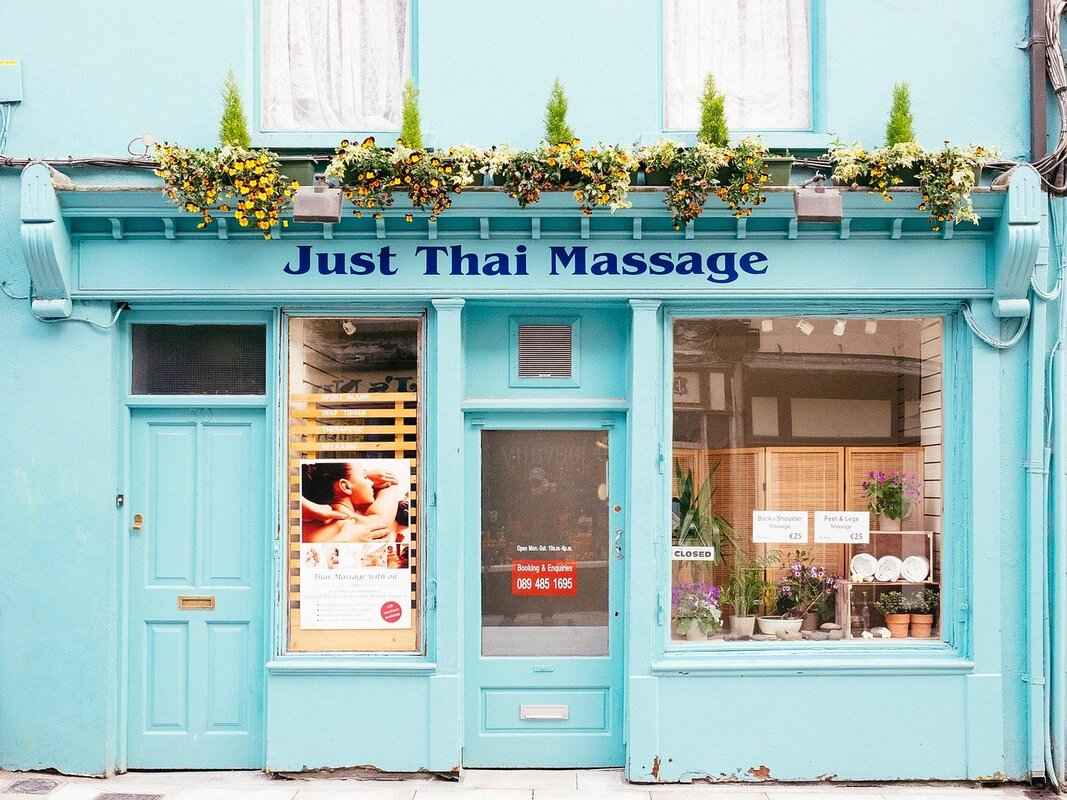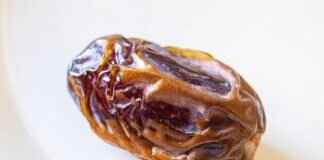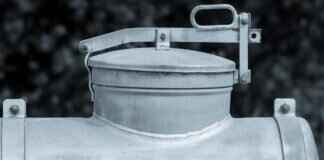This article delves into the rich world of Asian massage techniques, highlighting their historical significance and their relevance in alleviating stress in today’s fast-paced life. By exploring these time-honored practices, we uncover the profound benefits they offer for both physical and mental well-being.
What is Asian Massage?
Asian massage is a collective term that encompasses a variety of techniques deeply rooted in traditional practices across Asia. These methods focus on holistic wellness, integrating physical, emotional, and spiritual health. Understanding the foundational principles of these techniques reveals how they can effectively address stress and promote relaxation.
The Historical Significance of Asian Massage Techniques
The origins of Asian massage date back thousands of years, with each culture contributing unique elements. For instance, Chinese, Thai, and Indian traditions have all shaped the evolution of massage practices. This historical tapestry illustrates how ancient wisdom continues to inform modern therapeutic approaches.
Chinese Massage: Tui Na
Tui Na, a cornerstone of Chinese therapeutic techniques, combines acupressure and manipulative touch to restore balance and promote healing. This method emphasizes the flow of Qi (energy) within the body, making it a powerful tool for stress relief.
Benefits of Tui Na
- Improved circulation
- Reduced muscle tension
- Enhanced relaxation and overall well-being
Thai Massage: Nuad Bo-Rarn
Nuad Bo-Rarn, or Thai massage, is characterized by its combination of acupressure, yoga-like stretching, and energy work. This dynamic approach not only promotes relaxation but also enhances flexibility, addressing both physical and emotional stressors.
Japanese Shiatsu Massage
Simplistically defined, Shiatsu involves applying finger pressure to specific points, aiming to restore balance and promote health. This technique aligns with modern wellness practices, making it a popular choice for those seeking stress relief.
Health Benefits of Shiatsu
- Alleviation of stress and anxiety
- Improved sleep quality
- Enhanced emotional balance
Ayurvedic Massage: Abhyanga
Abhyanga is an Ayurvedic massage technique that utilizes warm oils and rhythmic strokes to foster relaxation and detoxification. This practice is tailored to individual needs, making it a personalized approach to stress management.
Benefits of Ayurvedic Massage
- Improved circulation
- Enhanced immune function
- Significant reduction in stress levels
Integrating Asian Massage into Modern Wellness Routines
Incorporating Asian massage techniques into daily routines can greatly enhance stress management. Practical tips include scheduling regular sessions, learning basic techniques for self-massage, and creating a calming environment to practice these methods.

What is Asian Massage?
Asian massage is a collective term that refers to a variety of therapeutic techniques originating from various Asian cultures, each with its unique philosophy and methods. These techniques are deeply rooted in traditional practices that emphasize holistic wellness, aiming to treat not just the physical body but also the mind and spirit. By understanding the principles behind these ancient practices, individuals can appreciate their relevance in today’s fast-paced world, particularly for stress relief.
At its core, Asian massage is about achieving balance and harmony within the body. This is achieved through a combination of techniques, including acupressure, stretching, and rhythmic movements. The focus is often on energy flow, which is referred to as Qi in Chinese medicine, or Prana in Ayurvedic practices. By manipulating the body’s energy pathways, these massages aim to alleviate tension, promote relaxation, and enhance overall well-being.
One of the distinguishing features of Asian massage is its emphasis on individualized treatment. Practitioners often assess a person’s unique needs and conditions before tailoring the massage to suit those specific requirements. This personalized approach not only enhances the effectiveness of the treatment but also fosters a deeper connection between the practitioner and the recipient.
- Stress Reduction: Many individuals turn to Asian massage techniques as a natural way to alleviate stress and anxiety, providing a respite from the demands of modern life.
- Pain Relief: Techniques like Tui Na or Shiatsu can effectively target chronic pain areas, offering relief and improving mobility.
- Enhanced Well-being: Regular sessions can lead to improved mental clarity, emotional balance, and physical health.
Incorporating Asian massage into one’s wellness routine can yield significant benefits, making it a valuable practice for anyone seeking to enhance their quality of life. As more people explore these ancient methods, the timeless wisdom they offer continues to resonate in our contemporary society.

The History of Asian Massage Techniques
The history of Asian massage techniques is a fascinating journey that spans thousands of years and various cultures. These ancient practices, deeply rooted in the philosophies of holistic wellness, have evolved significantly over time, adapting to the needs of different societies while maintaining their core principles.
Asian massage can be traced back to ancient civilizations, where it was not merely a form of physical therapy but also a spiritual practice. In China, the foundations of massage were laid in the context of Traditional Chinese Medicine (TCM) around 3000 BCE. Techniques such as Tui Na emerged, focusing on the flow of Qi (energy) through the body. This holistic approach emphasized the connection between the mind, body, and spirit, influencing many other Asian massage practices.
In India, the practice of massage is integral to Ayurvedic medicine, with references dating back to ancient texts like the Vedas. The technique known as Abhyanga utilizes warm oils and rhythmic strokes, designed to balance the body’s energies and promote overall health. This practice reflects the Ayurvedic belief in individualized treatment based on one’s unique constitution or dosha.
Meanwhile, in Japan, the development of Shiatsu during the early 20th century marked a significant evolution in massage techniques. Drawing on the principles of TCM, Shiatsu employs finger pressure on specific points, aiming to restore balance and alleviate various ailments. Its integration into modern wellness practices has made it a popular choice for stress relief.
As these techniques spread across Asia and beyond, they began to incorporate elements from different cultures, leading to the rich tapestry of Asian massage we see today. Each technique, whether it be Tui Na, Nuad Bo-Rarn, or Shiatsu, carries with it a unique history and set of principles that continue to resonate with practitioners and clients alike.
In summary, the historical development of Asian massage techniques showcases a remarkable blend of cultural influences and therapeutic philosophies. Understanding this history not only enriches the practice but also enhances its relevance in modern wellness routines.
Chinese Massage: Tui Na
Tui Na, pronounced “twee nah,” is a traditional Chinese massage technique that has been practiced for over 2,000 years. As a fundamental part of Traditional Chinese Medicine (TCM), Tui Na combines acupressure and therapeutic touch to address a variety of physical and emotional ailments. This technique is not merely a form of relaxation; it aims to restore balance to the body’s energy, known as Qi, promoting overall wellness.
The practice of Tui Na is rooted in the ancient understanding of the body’s meridian system, which consists of pathways through which Qi flows. By applying pressure to specific points along these meridians, practitioners can help alleviate pain, reduce tension, and enhance the body’s natural healing processes. This makes Tui Na a versatile therapy for conditions such as muscle pain, stress, and even digestive issues.
Principles of Tui Na
- Qi Flow: Central to Tui Na is the belief that health is maintained by the free flow of Qi. Blockages can lead to illness, and Tui Na aims to remove these blockages.
- Holistic Approach: Tui Na considers the whole person, including emotional and mental states, rather than just physical symptoms.
- Therapeutic Touch: The technique employs various hand movements and manipulations to stimulate the body’s own healing mechanisms.
Benefits of Tui Na
Engaging in Tui Na offers numerous benefits, including:
- Improved Circulation: The massage techniques enhance blood flow, which can aid in healing and recovery.
- Reduced Muscle Tension: Tui Na effectively relaxes tight muscles, promoting flexibility and ease of movement.
- Stress Relief: The calming effects of Tui Na can help to alleviate stress and anxiety, contributing to mental clarity and emotional stability.
In conclusion, Tui Na serves as a powerful tool for achieving balance and harmony within the body. By integrating this ancient technique into modern wellness routines, individuals can experience profound benefits that enhance physical and emotional health.
Principles of Tui Na
The are deeply rooted in the philosophy of Traditional Chinese Medicine (TCM), which emphasizes the significance of Qi (pronounced “chee”)—the vital energy that flows through the body. Understanding the dynamics of Qi is essential for practitioners and clients alike, as it forms the foundation of this ancient massage technique.
Tui Na is not merely a physical manipulation of muscles and tissues; it is a holistic approach that seeks to restore balance and harmony within the body. The flow of Qi can be disrupted by various factors, including stress, poor posture, and emotional turmoil. By applying specific techniques, practitioners aim to unblock and enhance the flow of Qi, promoting overall health and well-being.
Key principles of Tui Na include:
- Yin and Yang Balance: Tui Na seeks to balance the opposing forces of Yin and Yang within the body. Yin represents calmness and rest, while Yang signifies activity and energy. Achieving harmony between these forces is crucial for optimal health.
- Meridian Theory: According to TCM, the body has a network of meridians through which Qi flows. Tui Na techniques often target specific meridians to facilitate energy movement and alleviate discomfort.
- Holistic Perspective: Tui Na considers the whole person, including physical, emotional, and spiritual aspects. This comprehensive approach allows for personalized treatments that address the root causes of ailments rather than merely alleviating symptoms.
- Preventative Care: Regular Tui Na sessions can help maintain a balanced flow of Qi, preventing health issues before they arise. This preventative aspect is a cornerstone of TCM philosophy.
By grasping these principles, individuals can better appreciate the effectiveness of Tui Na as a healing modality. Whether seeking relief from chronic pain, stress reduction, or overall wellness, understanding the flow of Qi and its implications can significantly enhance the benefits derived from this therapeutic practice.
Benefits of Tui Na
Tui Na, a traditional Chinese massage technique, offers a plethora of benefits that contribute to both physical and mental well-being. By integrating various manual techniques, Tui Na aims to promote healing and relaxation, making it a valuable practice in today’s fast-paced world.
One of the primary benefits of Tui Na is its ability to improve circulation. The massage techniques stimulate blood flow, which enhances oxygen and nutrient delivery to muscles and tissues. This improved circulation not only aids in recovery from injuries but also promotes overall vitality.
Additionally, Tui Na is effective in reducing muscle tension. The application of pressure on specific points helps to release knots and tightness in muscles, resulting in a significant decrease in discomfort. This reduction in muscle tension can lead to improved range of motion and flexibility, which is essential for maintaining an active lifestyle.
Furthermore, Tui Na promotes enhanced relaxation. The rhythmic movements and gentle stretching involved in the practice trigger the body’s relaxation response, helping to alleviate stress and anxiety. Many individuals report feeling a profound sense of calm and clarity after a session, making it an excellent choice for those seeking relief from the pressures of modern life.
Moreover, the holistic approach of Tui Na addresses not only physical ailments but also emotional well-being. By balancing the flow of Qi (energy), Tui Na can help to restore harmony within the body, contributing to a greater sense of overall health and wellness.
In summary, the benefits of Tui Na are multifaceted, encompassing improved circulation, reduced muscle tension, and enhanced relaxation. These effects collectively contribute to better well-being and effective stress management, making Tui Na a valuable addition to any wellness routine.
Thai Massage: Nuad Bo-Rarn
Thai Massage, also known as Nuad Bo-Rarn, is an ancient healing practice originating from Thailand, deeply rooted in traditional medicine and spiritual beliefs. This unique form of massage is not just a physical treatment; it embodies a holistic approach that integrates the body, mind, and spirit. By employing a combination of acupressure, yoga-like stretching, and energy work, Thai massage offers a comprehensive method for promoting overall well-being.
The practice of Thai massage is characterized by its dynamic techniques that involve rhythmic compressions and stretches. Unlike typical Western massages, which often focus on muscle relaxation, Thai massage encourages flexibility and energy flow throughout the body. The practitioner uses their hands, elbows, knees, and feet to perform a series of movements that stimulate the body’s energy lines, known as Sen lines. This stimulation helps to release blockages, improving both physical and emotional health.
One of the most significant benefits of Thai massage is its ability to alleviate stress and promote deep relaxation. As clients engage in various stretches, they often experience a profound sense of release, both physically and mentally. This practice not only enhances flexibility but also aids in reducing muscle tension, improving circulation, and boosting overall vitality.
Moreover, Thai massage has been recognized for its potential to address emotional stress. The combination of physical touch and mindful breathing encourages a state of mindfulness, allowing individuals to connect with their inner selves and alleviate anxiety. This makes Thai massage a powerful tool for those seeking to enhance their mental health and emotional resilience.
Incorporating Thai massage into a regular wellness routine can lead to lasting benefits. Whether practiced in a studio or at home, the principles of Nuad Bo-Rarn can be adapted to suit individual needs, making it a versatile and effective method for modern stress relief.

Japanese Shiatsu Massage
is a unique and ancient therapeutic practice that has gained popularity in modern wellness circles. Originating from Japan, this massage technique involves applying finger pressure on specific points of the body, known as acupressure points, to promote healing and restore balance. This section delves into the intricacies of Shiatsu, highlighting its techniques, health benefits, and alignment with contemporary wellness practices.
Shiatsu is not merely a physical treatment; it embodies a holistic approach to well-being. Practitioners believe that by stimulating these pressure points, they can help release blocked energy, or Qi, allowing the body to heal itself. This technique is deeply rooted in the principles of Traditional Chinese Medicine, which emphasizes the balance of body, mind, and spirit.
The techniques employed in Shiatsu are diverse and tailored to individual needs. Some common methods include:
- Kneading: This technique involves rhythmic pressing and circular motions to relieve muscle tension.
- Tapping: Gentle tapping stimulates circulation and energizes the body.
- Stretching: Incorporating gentle stretches enhances flexibility and promotes relaxation.
Each session is customized, ensuring that the treatment aligns with the client’s specific health concerns and overall wellness goals.
The health benefits of Shiatsu are extensive. Regular sessions can lead to:
- Reduced stress and anxiety: Shiatsu promotes deep relaxation, helping to alleviate mental tension.
- Improved sleep quality: By calming the mind and body, Shiatsu can enhance sleep patterns.
- Enhanced circulation: The pressure applied during Shiatsu encourages blood flow, which is vital for overall health.
Moreover, many individuals report a greater sense of emotional balance and improved physical health after incorporating Shiatsu into their wellness routines.
In conclusion, Shiatsu massage stands out as a profound method for achieving holistic wellness. By integrating this ancient technique into modern health practices, individuals can experience significant improvements in both physical and mental well-being.
Techniques Used in Shiatsu
Simplifying Shiatsu Techniques for Better Understanding
Shiatsu, a renowned Japanese massage technique, employs a variety of hands-on methods designed to promote physical and mental well-being. Among the most utilized techniques are kneading, tapping, and stretching. Each of these techniques plays a crucial role in the overall effectiveness of Shiatsu, allowing practitioners to address various health concerns while providing deep relaxation.
Kneading involves applying rhythmic pressure to specific areas of the body, similar to the way dough is kneaded. This technique helps to release muscle tension, improve circulation, and enhance the flow of energy, or Qi, throughout the body. By focusing on tight or sore spots, practitioners can alleviate discomfort and promote a sense of calm.
Tapping, on the other hand, is a lighter technique that involves gentle percussive movements. This method stimulates the body’s energy pathways and encourages the release of endorphins, which are natural pain relievers. Tapping can invigorate the body and mind, making it an excellent addition to a Shiatsu session.
Stretching is another essential component of Shiatsu, often incorporating yoga-like movements. These stretches help to improve flexibility, release built-up tension in the muscles, and promote a sense of overall relaxation. By gently guiding the body through various positions, practitioners can help clients achieve a greater range of motion and physical comfort.
Understanding these techniques not only enhances the experience for those receiving Shiatsu but also allows individuals to appreciate the depth of this therapeutic practice. By recognizing the unique benefits of kneading, tapping, and stretching, clients can better understand how Shiatsu contributes to their overall health and well-being.
Health Benefits of Shiatsu
Simplifying Stress Relief with Shiatsu
Spa treatments and relaxation techniques have evolved over centuries, and among them, Shiatsu stands out as a unique Japanese massage method that effectively addresses both physical and emotional stress. This therapeutic practice is not just a luxury; it is a holistic approach to wellness that offers a multitude of health benefits.
Understanding Shiatsu
Shiatsu, which translates to “finger pressure,” employs various techniques such as kneading, tapping, and stretching to stimulate specific points on the body. This method is deeply rooted in the principles of Traditional Chinese Medicine, focusing on the flow of Qi (energy) and the balance of the body’s systems.
Comprehensive Health Benefits
- Alleviates Stress and Anxiety: Regular Shiatsu sessions can significantly reduce levels of cortisol, the stress hormone, leading to a calmer mental state.
- Improves Sleep Quality: By promoting relaxation and reducing tension, Shiatsu can help individuals achieve deeper and more restorative sleep.
- Enhances Circulation: The massage techniques used in Shiatsu stimulate blood flow, which can improve oxygen and nutrient delivery throughout the body.
- Relieves Muscle Tension: Shiatsu effectively targets tight muscles, providing relief from discomfort and enhancing overall flexibility.
- Supports Emotional Well-Being: The focus on holistic health means that Shiatsu can help balance emotions, promoting a sense of peace and emotional stability.
Integration into Daily Life
Incorporating Shiatsu into your wellness routine can be as simple as scheduling regular sessions with a qualified practitioner or learning basic techniques to practice at home. This ancient method is not only effective for immediate relief but also contributes to long-term health benefits, making it a valuable addition to modern stress management strategies.
Overall, Shiatsu provides a comprehensive approach to health that aligns well with contemporary wellness practices. Its ability to address both physical and emotional challenges makes it a popular choice for those seeking to enhance their quality of life.

Ayurvedic Massage: Abhyanga
Abhyanga is a revered Ayurvedic massage technique that has been practiced for centuries. It involves the application of warm herbal oils using rhythmic strokes, designed to promote both physical and mental well-being. This ancient practice is rooted in the principles of Ayurveda, which emphasizes a holistic approach to health, focusing on the balance of body, mind, and spirit.
Understanding Abhyanga
The technique of Abhyanga is not just a massage; it is a ritual that embodies the Ayurvedic philosophy. The use of warm oils, often infused with herbs, is tailored to an individual’s unique dosha, or body constitution. This personalization enhances the therapeutic effects, making it a deeply nourishing experience.
Therapeutic Effects of Abhyanga
Abhyanga offers numerous benefits, including:
- Relaxation: The rhythmic strokes help to calm the nervous system, promoting deep relaxation.
- Detoxification: The warm oils assist in the removal of toxins from the body, enhancing overall health.
- Improved Circulation: The massage stimulates blood flow, which can lead to better oxygenation of tissues.
- Enhanced Skin Health: The nourishing oils moisturize the skin, improving its texture and appearance.
- Stress Reduction: Regular practice can significantly lower stress levels, contributing to mental clarity and emotional stability.
Incorporating Abhyanga into Your Routine
To experience the full benefits of Abhyanga, consider integrating it into your wellness routine. It can be performed by a trained practitioner or as a self-massage at home. For self-massage, warm the oil and apply it using gentle, circular motions, focusing on areas of tension. Aim to practice Abhyanga regularly to maximize its benefits.
In conclusion, Abhyanga is more than just a massage; it is a holistic practice that nurtures the body and mind. By embracing this ancient technique, individuals can find a pathway to enhanced well-being and stress relief.
Components of Abhyanga
Abhyanga, an integral part of Ayurvedic practices, is a therapeutic massage technique that utilizes warm, herbal oils to rejuvenate the body and mind. A key aspect of this practice is its personalized approach, which tailors the choice of oils and techniques to the individual’s dosha—the unique combination of physical, emotional, and mental characteristics that define a person’s constitution.
Understanding the components of Abhyanga is essential for maximizing its benefits in today’s fast-paced world. The practice begins with the selection of oils, which are often infused with herbs and essential oils that correspond to each dosha. For instance, individuals with a predominance of the Vata dosha may benefit from warm, grounding oils like sesame or almond, while those with a Pitta constitution might prefer cooling oils such as coconut or sunflower. Lastly, individuals with a Kapha dosha often respond well to lighter oils like mustard or safflower.
| Dosha | Recommended Oils | Benefits |
|---|---|---|
| Vata | Sesame, Almond | Warmth, grounding |
| Pitta | Coconut, Sunflower | Cooling, calming |
| Kapha | Mustard, Safflower | Light, energizing |
The technique of Abhyanga involves rhythmic strokes that promote circulation and lymphatic drainage, enhancing the body’s natural detoxification processes. These strokes are typically applied in a specific direction: towards the heart for stimulating circulation and away from the heart for lymphatic flow. This method not only soothes the nervous system but also helps in releasing muscle tension and improving overall mobility.
Incorporating Abhyanga into a regular wellness routine can significantly enhance stress relief. The warm oils combined with mindful touch create a calming experience that can alleviate anxiety, improve sleep quality, and foster a deeper connection between body and mind. By understanding the components of Abhyanga and how they align with one’s dosha, individuals can harness the full potential of this ancient practice, making it a valuable tool for modern stress management.
Benefits of Ayurvedic Massage
Ayurvedic massage, particularly the technique known as Abhyanga, is a time-honored practice that offers a wealth of benefits for both the body and mind. This ancient form of massage utilizes warm herbal oils and rhythmic strokes to promote relaxation and rejuvenation. In this section, we will explore the diverse advantages of Ayurvedic massage and how it contributes to overall health and well-being.
- Improved Circulation: One of the primary benefits of Ayurvedic massage is enhanced blood circulation. The gentle yet firm strokes stimulate blood flow, ensuring that oxygen and nutrients are effectively delivered to tissues and organs. This improved circulation can lead to better organ function and increased energy levels.
- Enhanced Immune Function: Regular Ayurvedic massage can bolster the immune system. By reducing stress and promoting relaxation, the body is better equipped to fend off illnesses. The use of specific oils, rich in antioxidants and anti-inflammatory properties, further supports immune health.
- Reduced Stress Levels: In our fast-paced modern lives, stress has become a common affliction. Ayurvedic massage offers a peaceful escape, allowing individuals to unwind and release tension. The calming effects of the massage, combined with the soothing properties of warm oils, help to lower cortisol levels and promote a sense of tranquility.
- Detoxification: Ayurvedic massage aids in the detoxification process by stimulating the lymphatic system. This helps to eliminate toxins from the body, promoting overall health and vitality. The rhythmic movements also encourage the release of stored emotional stress, contributing to mental clarity.
- Improved Sleep Quality: Many individuals report better sleep after receiving Ayurvedic massage. The relaxation induced by the treatment can help to alleviate insomnia and improve overall sleep patterns, leading to a more restful night.
In summary, Ayurvedic massage is not just a luxurious experience; it is a powerful tool for enhancing physical and mental well-being. By incorporating this ancient practice into your wellness routine, you can enjoy its myriad benefits and achieve a more balanced and healthy lifestyle.

Integrating Asian Massage into Modern Wellness Routines
In today’s fast-paced world, integrating Asian massage techniques into our daily wellness routines can profoundly impact our ability to manage stress. These ancient practices, rooted in holistic wellness, offer a unique approach to relaxation and rejuvenation. Here are some practical tips to seamlessly blend these methods into your contemporary lifestyle.
- Start with Breathing Exercises: Before beginning any massage technique, take a few moments to practice deep breathing. This helps center your mind and prepares your body for relaxation.
- Set Up a Relaxing Space: Create a tranquil environment in your home. Use soft lighting, calming scents, and comfortable seating to enhance your massage experience.
- Incorporate Tui Na Techniques: Learn basic Tui Na strokes such as kneading and rolling. These can be easily applied to your shoulders and neck during a quick break at work.
- Practice Thai Stretching: Incorporate gentle Thai stretching into your morning routine. This not only increases flexibility but also helps release tension accumulated overnight.
- Schedule Regular Shiatsu Sessions: Consider setting aside time each week for a Shiatsu massage. This practice can help alleviate stress and improve your overall well-being.
- Utilize Abhyanga at Home: Try self-massage with warm oils as suggested in Ayurvedic traditions. This can be a soothing way to unwind after a long day.
By incorporating these Asian massage techniques into your daily life, you can cultivate a more balanced and stress-free existence. Remember, consistency is key; even small, regular practices can lead to significant improvements in your overall wellness. Embrace these ancient methods, and allow them to transform your modern lifestyle.
Frequently Asked Questions
- What are the main benefits of Asian massage techniques?
Asian massage techniques offer a myriad of benefits, including stress relief, improved circulation, and enhanced relaxation. By targeting energy flow and muscle tension, these ancient methods can help restore balance and promote overall well-being.
- How often should I get an Asian massage for optimal results?
For optimal results, it’s recommended to receive an Asian massage at least once a month. However, if you’re dealing with significant stress or muscle tension, more frequent sessions can be beneficial. Listen to your body and adjust accordingly!
- Are there any specific techniques I should try if I’m new to Asian massage?
If you’re new to Asian massage, starting with Shiatsu or Abhyanga can be a great choice. Both techniques are gentle yet effective, making them perfect for beginners looking to experience the benefits of massage without feeling overwhelmed.
- Can Asian massage help with specific health issues?
Absolutely! Many Asian massage techniques, like Tui Na and Thai massage, are designed to address specific ailments such as back pain, anxiety, and even digestive issues. Consulting with a trained therapist can help you find the best approach for your needs.
- Is it necessary to undress for an Asian massage?
While it depends on the type of massage, many Asian techniques can be performed with loose-fitting clothing. However, for techniques like Abhyanga, which use oils, it’s common to undress to your comfort level. Just communicate with your therapist!














